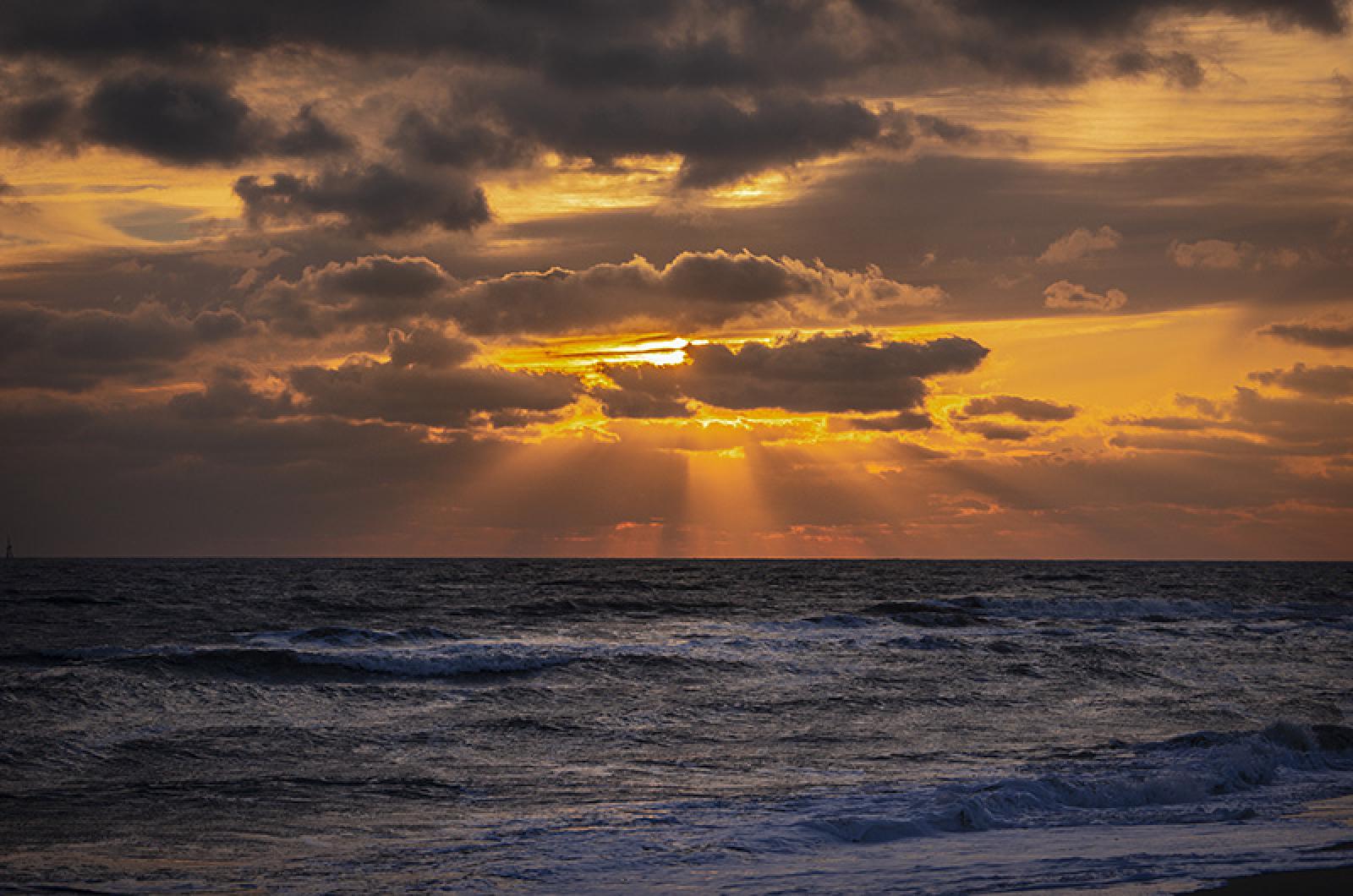It is hard not to feel grateful for every moment in the sun.
Winter, with its dearth of light, can be tough. But things are turning around. Sunlight is perceptibly increasing with every day, giving us off-season sun worshippers reasons to be light-hearted.
And it is not only the growing amount of sunlight that delights; it is also its charismatic qualities. The sunbeam, with its interesting iterations, is in the limelight.
Sunbeams are rays of light that are blasted though clouds or other impediments and appear as channels of sunshine. They can radiate up or down, be colorful and inspire legends and lore.
One type, call crepuscular rays, occur during sunrise or sunset. They sport a gorgeous array of hues, often orange or red. These colors result from the scattering of the blue light by atmospheric particles, which allows the other colors to emerge and dominate. With the sun below or coming above the horizon, these rays can shoot up or down as they shine off of and away from the sun.
On the other side, opposite of the setting or rising sun, find the anticrepuscular rays. This phenomenon can sometimes be observed from a plane when flying above the clouds. Though parallel, anticrepuscular rays seem to converge toward the antisolar point. This is a visual trick, similar to the way railroad tracks seem to unite when you look up or down the tracks.
The beauty of the solar rays is not something new under the sun. The phenomenon has been occurring and, of course, has been noticed for all of human history.
The Maori people called these beams the “taura a Maui,” or “ropes of Maui,” which referred to the story of an ancient. Maui, who was known for his trickeries, wanted to control the sun and get more light in the day. Convincing his brothers to help him, he schemed to restrain the sun so it would move more gradually across the sky. Using ropes made of flax, the brothers hatched a plan to capture the sun with many lassos and slow it down. They succeeded in their quest: the ropes held fast the sun and its light shined down on them, leading to the sunbeams that are still seen today.
Ancient Greeks believed sunbeams to be the mechanism for evaporation, drawing water into the sky. Religious people suggested that these sunbeams were pathways to and for the gods, calling them Buddha rays or God’s rays. Another alias, Jacob’s ladder, has a biblical origin, suggesting sunbeams are a ladder to heaven. In Genesis, Jacob runs from his brother Esau and dreams of a ladder from which angels and ultimately God descended to give Jacob his marching orders.
No matter what you call them, bask in their warmth and note that while they may not take you to the gods, they may bring you something just as divine: heavenly celestial visions in an otherwise dark winter season.
Suzan Bellincampi is islands director for Felix Neck Wildlife Sanctuary in Edgartown and the Nantucket Wildlife Sanctuaries. She is also the author of Martha’s Vineyard: A Field Guide to Island Nature and The Nature of Martha’s Vineyard.




Comments
Comment policy »